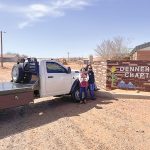
Letters: COVID-19 crisis is partly a water crisis
Looming in the background of the COVID-19 crisis in the Navajo Nation is the historical lack of water, a problem greatly worsened by the “mega-drought” that the Nation has been suffering for more than 20 years.
As we all know, many people must go to border towns to get water and to access running water at home, and many families must crowd into rural housing served by community water systems.
For many decades the Nation has been involved in litigating its water rights to the rivers that run through Navajoland, even though since 1908 U.S. law has recognized that indigenous Americans have priority water rights over all others. There still must be litigation to decide how much water the Navajo Nation is entitled to.
Meanwhile, almost a century ago, the surrounding states made agreements on how much river water they are entitled to, in the process leaving nothing for the Navajo Nation and other indigenous nations.
For 60 years the Navajo people have provided electricity to the cities of Los Angeles, Phoenix, Tucson, and Las Vegas, while even today a third of Navajo families lack electricity themselves. The power production and accompanying coal mining have used huge quantities of Navajo water, including pumped ground water.
Media coverage of COVID-19 in Navajoland emphasizes how pathetic the lack of electricity and running water among Navajo families is, but rarely if ever do these stories mention that enormous amounts of electricity and water from Navajoland have gone to the megacities of the Southwest.
The COVID-19 crisis in Navajoland today is partly also a water crisis, and the water crisis must be addressed now.
Klara Kelley
Gallup, N.M.
Harris Francis
Window Rock, Ariz.
Suggestions for use of CARES Act funds
As reported in several news outlets, including yours, the Navajo Nation received, or is in the process of receiving $600 million.
As an epidemiologist and future doctor of public health (2021), in partnership with a physician, we would like to provide guidance on how the funds should be used. Last year, the Tséhootsooí Medical Center conducted a community health needs assessment that used qualitative and quantitative methods to identify and prioritize health needs in the Fort Defiance Service Delivery Area, comprised of 16 chapters along Navajo Route 12 from Crystal, New Mexico, to Sanders, Arizona.
Using this document and our knowledge of being community members, we recommend the following priorities:
1. Telecommunications infrastructure. Right now, the highest internet speed on the reservation is 12Mbps, whereas border towns, 20 miles away, can get speeds over 100Mbps, eight times more than the reservation capability. Internet infrastructure can allow for location-based services such as emergency service response for fire, EMS, and police response. Telecommunications can also assist with address locations, making deliveries to the reservation possible. The internet allows individuals to grow and explore the world while opening up economic opportunities.
2. Water infrastructure. Most of the wells on the Navajo Nation were developed for domesticated animals or livestock. Clean water is an essential component of healthy living.
3. Expanded public safety resources, including personnel. There have been tragedies in homes that could have been prevented if more personnel and resources were provided to public safety agencies.
4. Increase public health investment. Assess the current public health system to identify and prioritize needs, especially the public health workforce. Partner with local institutions of higher learning to build Navajo public health leaders.
5. Comprehensive community health assessment complete with reliable data. Identify and prioritize health needs in each region and develop a plan to improve. There are several organizations, research centers, or Navajo consultants that are experts in doing this kind of work, including ourselves.
Thank you for taking the time to read our recommendations. We highly encourage you to read the TMC community health needs assessment as well.
Dominic Clichee
Fort Defiance, Ariz.
Michael Tutt, MD
Fort Defiance, Ariz.
Involve NHA, NTUA in CARES strategy
I have not read the Coronavirus Aid, Relief, and Economic Security (CARES) Act. However, I received several email messages about the act. What concerned me were two email messages. One indicated that the CARES Act funds need to be spent by the end of December 2020.
As a former federal employee, I suggest that the person heading the project ask the funding agency if funds are obligated when under contract. The other is the following statement from the Office of the President: “… The three branches of government need to come together and have a unified approach. This is not the time to play politics — it’s time to work together with all branches of government, not just one. …”
I would suggest the chief executive officer of the Navajo Housing Authority be involved. The person most likely has experience in setting up project implementation schedules and timely expenditures. Did NHA do a feasibility study of what is needed?
The Navajo Tribal Utility Authority should be involved for infrastructure, such as water lines, as a public health need. Below is the website for the Coronavirus Relief Fund Guidance for state, territorial, local, and tribal governments (https://home.treasury.gov/system/files/136/Coronavirus-Relief-Fund-Guidance-for-State-Territorial-Local-and-Tribal-Governments.pdf).
Different divisions of the Navajo Nation have done feasibility studies. It would be nice to set up a library of all feasibility studies. Some may just need to be updated rather than spending thousands or millions of dollars.
Thank you and be safe.
Nancy Todea
Shiprock, N.M.
Tips for learning to write well
According to Common Core Standards in Language Arts, there are four domains: Reading, writing, listening, and speaking. The students must learn these domains, diligently. They are presented each school day.
CCS content is taught at grade level. The standards in each content area are designed at a high level.
It is designed for students to think, critically. It is paramount on the part of the student(s) to listen intently, pay attention, ask questions, and learn. CCS has been in the Navajo school systems for about eight years. Previously, I gave you tips on reading (Navajo Times, April 23, 2020).
These are my writing tips for children and you as parents with children. Writing can be complex, or it can be easy. I believe it depends on how the student came up through the school system in learning.
If the child listened well, paid attention and practiced the basics such as learning the alphabet, vocabulary development, parts of speech, reading, etc., they should have an easier time with beginning writing and writing in general. There are at least four different types of writing as suggested by studies. As I said, teachers teach this every day in the classroom.
The writing types: “expository (to inform or explain), persuasive (attempts to influence), narrative (tell a story, fact or fiction), and descriptive (paint a picture).”
I encourage all students to profoundly learn the writing process and practice it daily.
My tips: In reading, pay attention and study how the writer influences you; write a daily journal of your activities, write about what you read, practice how you use your conventions (mechanics like periods, commas, etc.); develop paragraphs, think about how you can generate ideas about what to write about; practice using complete and fluent sentences, word choices are important, re-read and edit your writing, and have someone else read what you wrote.
You can longhand or use a computer to write. The computer is easier to edit your writing. As the student gets into college, writing does become more technical.
I say this because the college expects it. Students are expected to use a professional format of writing such as American Psychological Association format. This format should be programmed in your computer. I encourage all students to learn all they can about writing.
Ask questions, your teacher knows best about writing. I believe it is so important for the student to learn all the aspects and processes of writing. As I suggested, one way is to practice writing daily. As a citizen of Kayenta, I want to commend the governing board, district administration, parents, grandparents, relatives, Monument Valley High School graduating class (132 students) of 2020 for milestone reached and achieved, high school administration, teachers, support staff, and community for the unrelenting support of students.
All the beautifully designed students’ names and banners saying “Congratulations Class of 2020, Monument Valley High School” are displayed on the BIE fence along Highway 163. Toot and blow your horns, yea!
Eugene Charley
Kayenta, Ariz.
Thank you for funeral donations
Ahe’hee nitsagoo shik’eii. The Gonnie family of White Cone, would like to express an appreciation for your generous donation towards the service of our late medicine man, father, grandfather and uncle, Larry B. Gonnie.
We are deeply grateful for the kindness you extended during this difficult time. You kept us in your thoughts and prayers. Our brother had great admiration toward the people he met and helped during his lifetime. He will be missed.
Ahe’hee to the family of Henry Yazzie, Kalvin White, Troy Little, Bennie and Judy Bitsui, Jeffery Thomas, Larry Dashner, Herbert Hoover Jr., Betty Hoover, John Billy Yazzie Jr., Clara Jim, Melissa Gonnie, and relatives from Indian Wells, Arizona, and those not listed.
Grace Tracy
Fort Defiance, Ariz.
Request for a pen pal
My grandparents lived in Waterflow, and farmed back in the 1930s or so prior to moving to Colorado in 1945 or so. Their name was Paul (Hook) and Helen Wethington. They always told me stories when they farmed in Waterflow, and hired the Navajos to help them. They had a lot of respect for the Navajos and their culture.
My grandmother always fed them lunch and had them sit with them to eat. The Navajos made blankets for them, which have been handed down to me. I love these blankets!
They also had a Navajo doll that they made for my grandmother, which was given to our local museum after they passed away. They also taught me a few words in Navajo.
I am a 65-year-old woman who would very much love to have a pen pal around my age to learn more about the Navajos and just have a pen pal who could tell me about different things and remember some of the past. I love the Navajo culture and have great respect for it. Thank you and hope someone wanting a true friend will respond.
Jo Ellen Hoffman
Fort Lupton, Colo.
Seeking Navajo pen pals
Good morning, I’m writing from Italy, because I would like to have some pen friends Navajo people, for discovery your way of life, history, tradition. My English is not very very good, I know.
I’m female, 50 years old, and I’ve no preference, man or woman, are welcome for to start with a good friendship. My address email is alessandrissima_2008@libero.it I wait for your kindly reply. Best regards.
Alessandra Camandona Caprieto
Piemonte, Italy

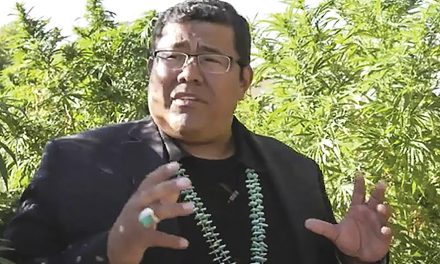
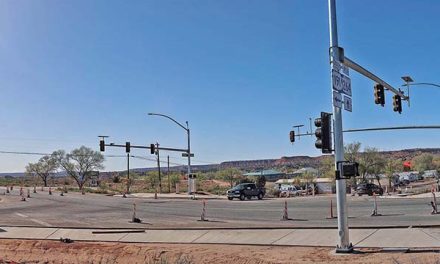
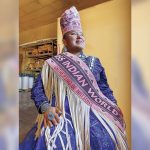
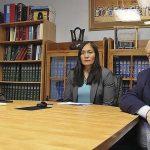





 Highway 264,
Highway 264, I-40, WB @ Winslow
I-40, WB @ Winslow